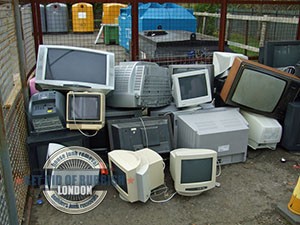A recent report released by United Nations University (UNU) has revealed some troubling details about e-waste recycling and reuse. E-waste is the term used to describe all types of redundant, damaged, old or unwanted electronic equipment – from calculators to computer monitors and all in between. Production of consumer electronics uses a wide variety of valuable materials such as precious and semiprecious metals. Along with these, consumer electronics are also manufactured using other recyclable materials like plastic, rubber, glass etc. At the moment, only sixteen percent of all e-waste worldwide is recycled or reused – a very low percentage compared to the numbers of electronic devices produced. In twenty fourteen alone, only one sixth (if that) of nearly forty million tonnes of electronics were reused or made available for recycling.
As per the UNU report, in two thousand fourteen, sixty percent of all e-waste was household appliances mainly kitchen, laundry and bathroom equipment. Personal information and communication technology (ICT) such as mobile phones, portable computers like tablets, laptops etc. also printers, scanners etc. accounted for seven percent of all e-waste generated by the world in twenty fourteen.
Small electric and electronic equipment and devices like vacuum cleaners, microwaves, toasters, electric shavers and video cameras accounted for nearly thirteen million tonnes of e-waste generated in twenty fourteen.
Large equipment like washing machines, clothes dryers, dishwashers, electric stoves, and photovoltaic panels and others such accounted for about twelve million tonnes of e-waste in two thousand fourteen.
Temperature exchange equipment for cooling and heating (heaters, air conditioners etc.) added up to seven million tonnes of e-waster in the same year.
Screens and monitors (both cathode radial tube and flat panel technology) amounted to six million tons of e-waste worldwide for the same twelve month period.
As mentioned above, personal information and communication technology (ICT) accounted for seven percent of total e-waste generated in twenty fourteen, in tonnage this is about three million tonnes of small ICT equipment.
 One million tonnes of lamps and other illumination equipment was also part of e-waste amounts generated in two thousand fourteen.
One million tonnes of lamps and other illumination equipment was also part of e-waste amounts generated in two thousand fourteen.
It was estimated that for twenty fourteen alone, the value of salvageable materials of value present in e-waste amounts to fifty to billion dollars, which is a large sum of money by anyone’s standards. The UNU report says e-waste in twenty fourteen contained sixteen and a half kilotons of iron, nineteen hundred kilotons of copper, and three hundred tonnes of gold. There were also significant amounts of silver, aluminium, palladium etc.
The countries generating the highest amounts of e-waste last year were the US and China. The results indicate that there is still a long way to go before e-waste is recycled in sufficient amounts. If your office or business has generated e-waste do your bit and help raise the recycling rate through a specialised e-rubbish removal. The service is provided by most of the good waste removal companies, and using it ensures e-waste is properly recycled and valuable materials and precious metals are extracted for further processing and use.
